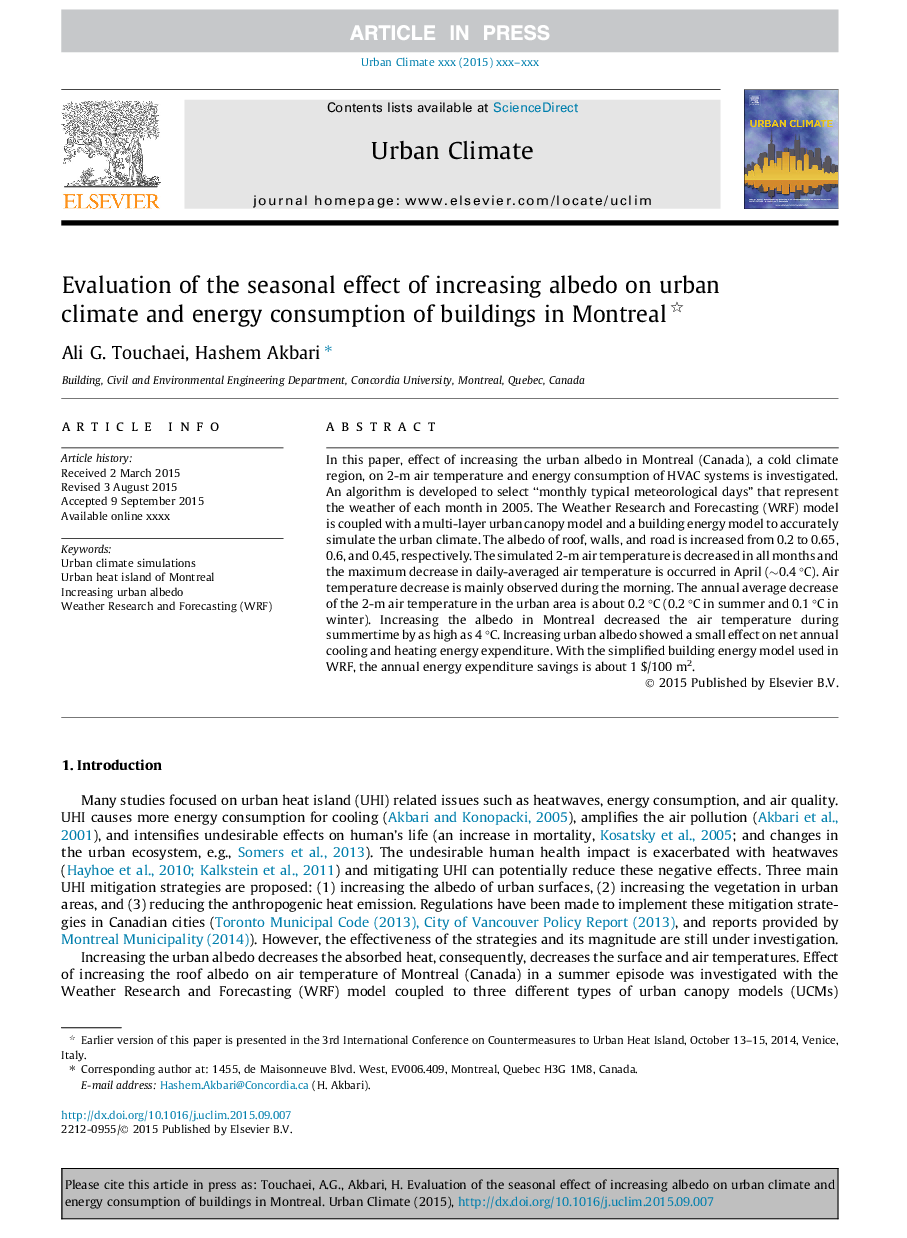| Article ID | Journal | Published Year | Pages | File Type |
|---|---|---|---|---|
| 10260254 | Urban Climate | 2015 | 12 Pages |
Abstract
In this paper, effect of increasing the urban albedo in Montreal (Canada), a cold climate region, on 2-m air temperature and energy consumption of HVAC systems is investigated. An algorithm is developed to select “monthly typical meteorological days” that represent the weather of each month in 2005. The Weather Research and Forecasting (WRF) model is coupled with a multi-layer urban canopy model and a building energy model to accurately simulate the urban climate. The albedo of roof, walls, and road is increased from 0.2 to 0.65, 0.6, and 0.45, respectively. The simulated 2-m air temperature is decreased in all months and the maximum decrease in daily-averaged air temperature is occurred in April (â¼0.4 °C). Air temperature decrease is mainly observed during the morning. The annual average decrease of the 2-m air temperature in the urban area is about 0.2 °C (0.2 °C in summer and 0.1 °C in winter). Increasing the albedo in Montreal decreased the air temperature during summertime by as high as 4 °C. Increasing urban albedo showed a small effect on net annual cooling and heating energy expenditure. With the simplified building energy model used in WRF, the annual energy expenditure savings is about 1 $/100 m2.
Related Topics
Physical Sciences and Engineering
Earth and Planetary Sciences
Earth and Planetary Sciences (General)
Authors
Ali G. Touchaei, Hashem Akbari,
